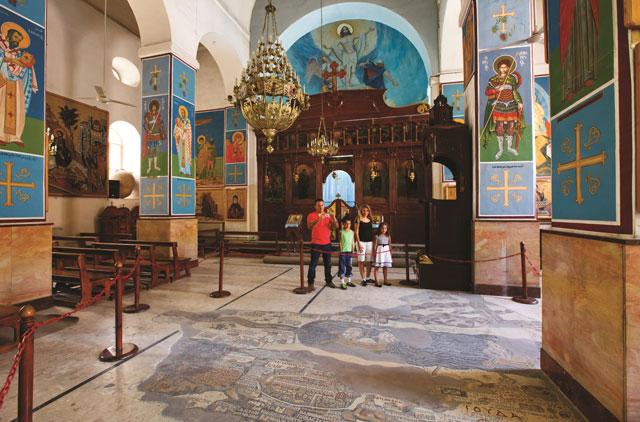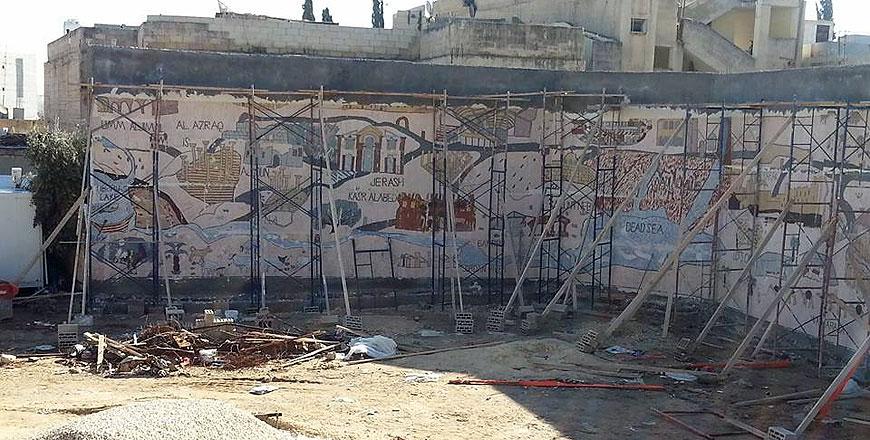You are here
Third generation mosaic artist keeps traditional craft alive
By Jocelyn Chau - Jan 02,2022 - Last updated at Jan 02,2022

Mike Coper, a mosaic artist, poses for a photo at his shop in Madaba (Photo by Jocelyn Chau)
MADABA — In Madaba, also known as the “City of Mosaics”, a third generation member of an artisan family that has been making mosaics professionally for decades, found his calling in preserving the traditional craft.
Mike Coper, born and raised in Jordan and originally from a Christian bedouin family from the mountains of the Sinai Peninsula in Egypt, is a professional mosaic artist whose family owns several mosaic shops in Madaba.
Located 30 kilometres southwest of Amman, Madaba is most famous for its well-preserved Byzantine and Umayyad mosaics in the sixth century including the Byzantine mosaic map of the holy land on the floor of the 19th century St George’s Church, which attracts thousands of foreign visitors every year.
Regarding how his family got started in making mosaics, Mike said: “The idea came from my grandfather who was staying with the father of the St George Church at the time — he was good friends with the father. When he found the mosaics inside the church, he tried to help the father fix some parts of it and he loved the way of doing it.”
“He really loved the mosaic art so he tried to learn more about the old and professional way of making mosaics. After that, people would come and ask him to fix this and fix that, and he would then teach it to my father. That’s why now we are the professional people to do mosaics in Madaba,” Mike added.
The mosaic designs Coper makes range from trees, birds, and flowers to Orthodox church icons such as those in the St George Church
According to Coper, the most difficult part of doing mosaics is the skill of cutting small individual mosaic tiles out of limestones with the perfect shape and size.
“When we are doing trees or flowers, we have to make very tiny stones so it’s impossible to get the perfect piece from the first cut. You’ll have to work hard and cut maybe more than 15 times to get a very professional piece,” Mike explained.
He also noted that the art might also face extinction soon as not many young people are involved in this traditional profession anymore these days.
Keira Logan, a first-timer to Jordan from Houston, Texas, said Madaba has “a slower pace of life” compared to Amman.
“You experience much more hospitality here in Madaba than in bigger cities. Also, I get the impression that everybody knows everybody in this small town. In terms of the mosaic art I have seen in the museums and churches here, I really admire the craftsmanship that went into it. It was striking how long it took to make the mosaics — such a long process,” she added.
Related Articles
AMMAN — The Madaba Map in the St George Church, 30km southwest of Amman, can be traced back to the mid-sixth century AD, according to Britis
AMMAN — Madaba has won the 2016 World Crafts City title for mosaic, in a competition organised by the World Crafts City (WCC), the Tou
AMMAN — After winning the 2016 World Crafts City title for mosaics in 2016, Madaba has completed the first stage of “the largest mosaic piec


















